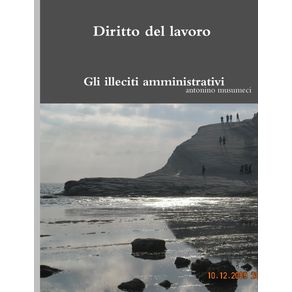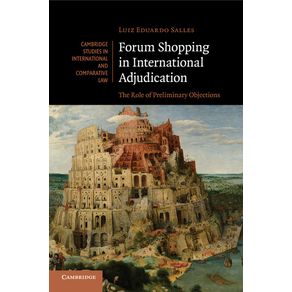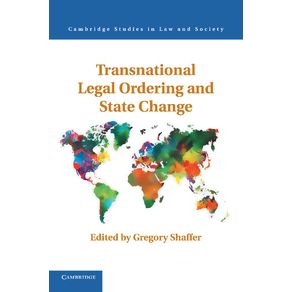| Origem | Literatura Estrangeira |
|---|---|
| Quantidade de Páginas | 386 |
| Acabamento | Capa Comum |
| Autores | Jon A. Souder |
| Idioma | Inglês |
| Edição | 0 |
| Selo | University Press of Kansas |
 Vade Mecum DPE-MG (2ª Edição)
Vade Mecum DPE-MG (2ª Edição)
Editora GuedesJus
R$ 120,00 ou até 2x sem juros Construction Contract Claims
Construction Contract Claims
Bloomsbury Publishing plc
R$ 725,36 ou até 3x sem juros Diritto del Lavoro
Diritto del Lavoro
Lulu Press
R$ 123,08 ou até 2x sem juros Genealogia del Derecho Penal (Tomo II)
Genealogia del Derecho Penal (Tomo II)
Lulu Press
R$ 247,05 ou até 3x sem juros Un nuovo concetto di oggetto sociale
Un nuovo concetto di oggetto sociale
Lulu Press
R$ 137,02 ou até 2x sem juros ALLAN R. BREWER-CARÍAS. Proyección de su Obra en Iberoamérica
ALLAN R. BREWER-CARÍAS. Proyección de su Obra en Iberoamérica
EDITORIAL JURIDICA VENEZOLANA INTER
R$ 151,51 ou até 3x sem juros Tallinn Manual 2.0 on the International Law Applicable to Cyber Operations
Tallinn Manual 2.0 on the International Law Applicable to Cyber Operations
Cambridge University Press
R$ 486,57 ou até 3x sem juros Transforming Gender Citizenship
Transforming Gender Citizenship
Cambridge University Press
R$ 324,72 ou até 3x sem juros A Theory of Mediators Ethics
A Theory of Mediators Ethics
Cambridge University Press
R$ 363,71 ou até 3x sem juros Non-Legality in International Law
Non-Legality in International Law
Cambridge University Press
R$ 268,89 ou até 3x sem juros The Negotiable Constitution
The Negotiable Constitution
Cambridge University Press
R$ 372,22 ou até 3x sem juros Reputation and Judicial Tactics
Reputation and Judicial Tactics
Cambridge University Press
R$ 286,72 ou até 3x sem juros A Critique of Proportionality and Balancing
A Critique of Proportionality and Balancing
Cambridge University Press
R$ 291,83 ou até 3x sem juros Your Next Government?
Your Next Government?
Cambridge University Press
R$ 291,19 ou até 3x sem juros Contractual Knowledge
Contractual Knowledge
Cambridge University Press
R$ 337,06 ou até 3x sem juros Vade Mecum DPE-MG (2ª Edição)
Vade Mecum DPE-MG (2ª Edição)
Editora GuedesJus
R$ 120,00 ou até 2x sem juros Vade Mecum DPE-ES (2ª Edição)
Vade Mecum DPE-ES (2ª Edição)
Editora GuedesJus
R$ 120,00 ou até 2x sem juros Regime Jurídico das reorganizações
Regime Jurídico das reorganizações
Saraiva Jur
R$ 152,00 ou até 3x sem juros Inefficienza della giustizia civile e fuga dal processo
Inefficienza della giustizia civile e fuga dal processo
Lulu Press
R$ 83,41 à vista Plain Language Legal Writing
Plain Language Legal Writing
Lulu Press
R$ 155,83 ou até 3x sem juros Elementi di diritto tributario
Elementi di diritto tributario
Lulu Press
R$ 190,67 ou até 3x sem juros Compendio di Diritto Processuale Penale
Compendio di Diritto Processuale Penale
Lulu Press
R$ 184,38 ou até 3x sem juros Storia del Diritto Ambientale
Storia del Diritto Ambientale
Lulu Press
R$ 193,19 ou até 3x sem juros Elementi di Diritto Privato
Elementi di Diritto Privato
Lulu Press
R$ 141,16 ou até 2x sem juros Tallinn Manual 2.0 on the International Law Applicable to Cyber Operations
Tallinn Manual 2.0 on the International Law Applicable to Cyber Operations
Cambridge University Press
R$ 486,57 ou até 3x sem juros The Choice Theory of Contracts
The Choice Theory of Contracts
Cambridge University Press
R$ 248,64 ou até 3x sem juros Non-Legality in International Law
Non-Legality in International Law
Cambridge University Press
R$ 268,89 ou até 3x sem juros The Negotiable Constitution
The Negotiable Constitution
Cambridge University Press
R$ 372,22 ou até 3x sem juros Transfer of Immovables in European Private Law
Transfer of Immovables in European Private Law
Cambridge University Press
R$ 843,08 ou até 3x sem juros Reputation and Judicial Tactics
Reputation and Judicial Tactics
Cambridge University Press
R$ 286,72 ou até 3x sem juros Vade Mecum DPE-MG (2ª Edição)
Vade Mecum DPE-MG (2ª Edição)
Editora GuedesJus
R$ 120,00 ou até 2x sem juros Vade Mecum de Súmulas e Ojs: STF-STJ-TST-TSE-STM-TCU-TNU-CNMP
Vade Mecum de Súmulas e Ojs: STF-STJ-TST-TSE-STM-TCU-TNU-CNMP
Editora GuedesJus
R$ 120,00 ou até 2x sem juros Deutsches Strafrecht
Deutsches Strafrecht
Springer Nature B.V.
R$ 596,28 ou até 3x sem juros Plain Language Legal Writing
Plain Language Legal Writing
Lulu Press
R$ 155,83 ou até 3x sem juros Storia del Diritto Ambientale
Storia del Diritto Ambientale
Lulu Press
R$ 193,19 ou até 3x sem juros Manuale di Diritto Urbanistico
Manuale di Diritto Urbanistico
Lulu Press
R$ 160,78 ou até 3x sem juros ALLAN R. BREWER-CARÍAS. Proyección de su Obra en Iberoamérica
ALLAN R. BREWER-CARÍAS. Proyección de su Obra en Iberoamérica
EDITORIAL JURIDICA VENEZOLANA INTER
R$ 151,51 ou até 3x sem juros Property Theory
Property Theory
Cambridge University Press
R$ 327,25 ou até 3x sem juros Forum Shopping in International Adjudication
Forum Shopping in International Adjudication
Cambridge University Press
R$ 411,01 ou até 3x sem juros Transfer of Immovables in European Private Law
Transfer of Immovables in European Private Law
Cambridge University Press
R$ 843,08 ou até 3x sem juros Proportionality and Judicial Activism
Proportionality and Judicial Activism
Cambridge University Press
R$ 289,63 ou até 3x sem juros A Critique of Proportionality and Balancing
A Critique of Proportionality and Balancing
Cambridge University Press
R$ 291,83 ou até 3x sem juros Constitutionalism and the Rule of Law
Constitutionalism and the Rule of Law
Cambridge University Press
R$ 366,72 ou até 3x sem juros Transnational Legal Ordering and State Change
Transnational Legal Ordering and State Change
Cambridge University Press
R$ 306,15 ou até 3x sem juros Contractual Knowledge
Contractual Knowledge
Cambridge University Press
R$ 337,06 ou até 3x sem juros